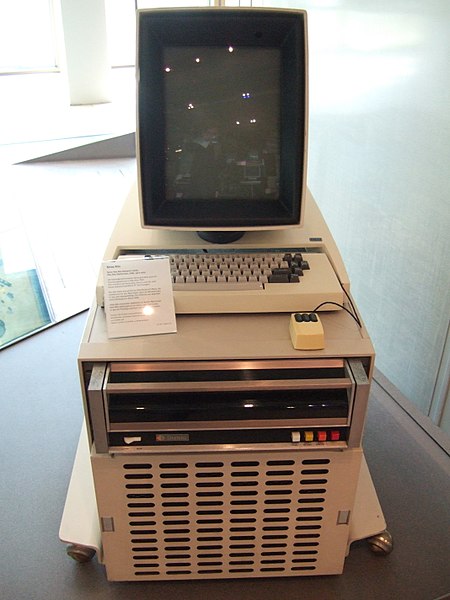The Xerox Alto is a computer system developed at Xerox PARC in the 1970s. It is considered one of the first workstations or personal computers, and its development pioneered many aspects of modern computing. It features a graphical user interface (GUI), a mouse, Ethernet networking, and the ability to run multiple applications simultaneously. It is one of the first computers to use a WYSIWYG text editor and has a bit-mapped display. The Alto did not succeed commercially, but it had a significant influence on the development of future computer systems.
The Alto has a keyboard, mouse, and portrait-oriented monitor.
The top three buttons.
The underside has three rolling balls.
The Alto keyset is a chorded keyboard that never became popular.
A workstation is a special computer designed for technical or scientific applications. Intended primarily to be used by a single user, they are commonly connected to a local area network and run multi-user operating systems. The term workstation has been used loosely to refer to everything from a mainframe computer terminal to a PC connected to a network, but the most common form refers to the class of hardware offered by several current and defunct companies such as Sun Microsystems, Silicon Graphics, Apollo Computer, DEC, HP, NeXT, and IBM which powered the 3D computer graphics revolution of the late 1990s.
Tim Berners-Lee created the World Wide Web at CERN in Switzerland on the NeXTcube workstation.
Early Xerox workstation
HP 9000 model 425 workstation running HP-UX 9 and Visual User Environment (VUE)
HP 9000 model 735 running HP-UX and the Common Desktop Environment (CDE)








